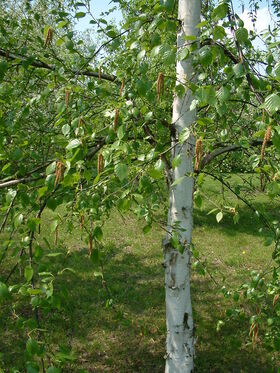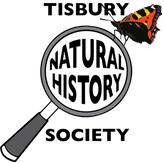 Photo: Brzoza_nadrzeczna_Betula utilis var jacquemontii - author Radomil Bothanic Garden, Poznań Photo: Brzoza_nadrzeczna_Betula utilis var jacquemontii - author Radomil Bothanic Garden, Poznań Anna's talk was based on her book Birch (full details on our Reading List page) - it was delightful, and Anna's understandable enthusiasm carried us through amazing fact after amazing fact and observations of its historic, social and ecological significance. I'm sure I'm not alone in saying how impressed I was at the tree's zillion different uses and role in many different cultures. The photographs Anna used were all quite lovely and effectively illustrated the points she was making. (A timely page feature on 'Choosing the whitest birch' in the January issue of RHS's The Garden recommends this betula utilis subsp.jacquemontii 'Grayswood Ghost' - something like the one in this photo.) The publisher's summary of the book's content is better than any summary I could myself provide, of this excellent end to our monthly series of autumn/winter talks for 2020, which we managed to sustain against all odds - and with the support of our tech-savvy membership: 'Elegant and beautiful, rich in history and supremely useful, birches have played an extraordinary yet largely unrecognized part in shaping both our natural environment and the material culture and beliefs of millions of people around the world. 'For thousands of years they have given people of the northern forests and beyond raw materials in the form of leaves, twigs, branches and bark, as well as wood and sap, not simply to survive but to flourish and express their identity in practical and spiritual ways. Tough, waterproof and flexible, birch bark has been used for everything from basketry and clothing to housing and transport, musical instruments and medicines, as well as a means to communicate and record sacred beliefs: some of our most ancient Buddhist texts and other historic documents are written on birch bark. Birches have not only shaped regional cultures – creating, for example, the Native American wigwam and the birch bark canoe – but continue to supply raw materials of global economic importance today. 'Birch explores the multiple uses of these versatile trees as well as the ancient beliefs and folklore with which they are associated. Richly illustrated, this book presents a fascinating overview of their cultural and ecological significance, from botany to literature and art, as Anna Lewington looks both at the history of birches and what the future may hold in store for them.' Comments are closed.
|
Photo: Avocets (Izzy Fry)
The headers display photos taken by our members. Do get in touch via the Contact Form if you'd like to submit a photo for selection.
Archives
May 2024
Categories
All
|

 RSS Feed
RSS Feed